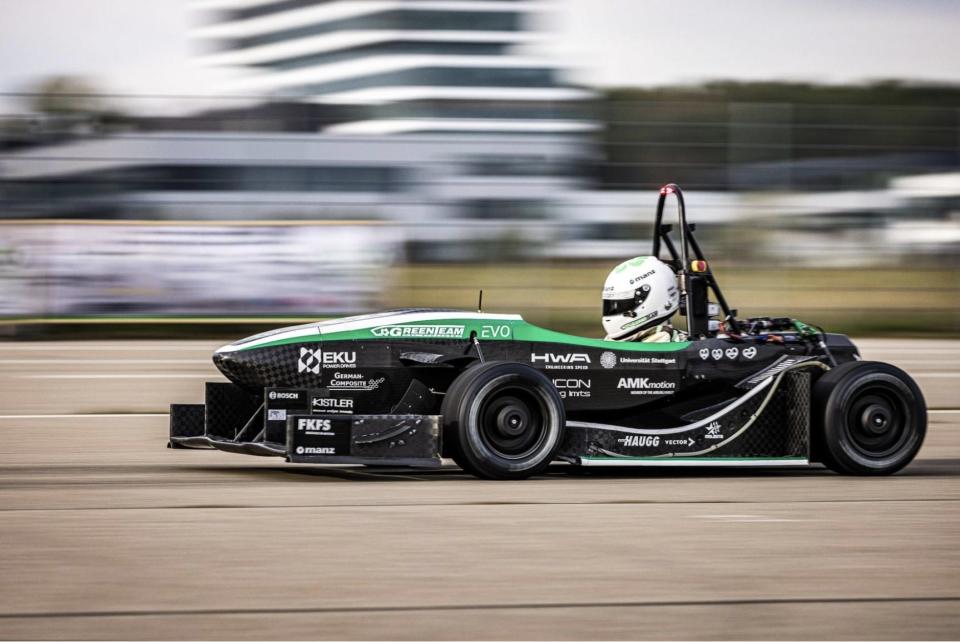Watch a tiny electric race car smash the world acceleration record with a 1.46-second run to 62 mph

German students built the world's fastest-accelerating electric vehicle.
The carbon-fiber race car zipped to 62 mph in 1.461 seconds late last month.
It weighs 320 pounds and makes 241 horsepower.
A new world's quickest electric vehicle has been crowned, and it isn't made by Tesla or Bugatti.
It was built by students at the University of Stuttgart — and no, it isn't for sale.
The pint-sized, home-built racer became the fastest-accelerating electric car on Earth last month (certified by Guinness) when it rocketed from a standstill to 62 mph in a blistering 1.461 seconds. The school's 20-student GreenTeam beat the previous record of 1.516 seconds set in 2016.
"The University of Stuttgart is proud that the GreenTeam has succeeded in setting a new record for the acceleration of e-vehicles. I'm really excited about what our students have accomplished," Professor Wolfram Ressel, Rector of the University of Stuttgart, said in a statement.
Key to the record-breaking run was a marriage of a lightweight vehicle and lots of power. The carbon-fiber car weighs around 320 pounds and makes 241 horsepower, giving a power-to-weight ratio of 1,750 horsepower per ton. The Tesla Model S Plaid, one of the quickest accelerating cars you can buy, has 1,100 horsepower and weighs more than two tons.
Historically, the quickest production cars were typically gas or hybrid supercars like the $4 million Bugatti Chiron Super Sport. But electrification has helped democratize ludicrous zero-to-60-mph times. EVs by nature are quicker than gas vehicles because they can deliver torque instantly and don't need to rev up to suck in more fuel.
You can watch the record-breaking run below. Blink and you might miss it.
Read the original article on Business Insider

 Yahoo Autos
Yahoo Autos 